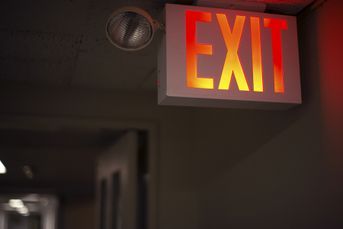Ask the Adviser: How can I best protect my investments as the markets are sinking?
Before the stock market begins to decline, investors need to have a set of plans designed to remove emotion from the decision-making process.
Investors don’t plan to fail. They fail to plan.
Markets typically pullback every month. Most pullbacks are nothing more than innocuous 3% to 5% dips — short bouts of weakness followed by new highs. Every quarter or so, the shallow pullback deepens to a 6% to 9% drop. Occasionally, full-fledged corrections of 10% or more take hold. Every four to five years, a bear market hits that lops at least 20% off of the major stock-market indices.
When investors think about protecting their investments, they usually don’t worry about the small pullback, and many don’t really care about the deeper one. It’s the steep declines of 10% or more that tend to test the mettle of the average investor. I know from my own client base that I rarely hear from anyone who is concerned until they see a stock-market decline, usually one that exceeds 10%, make headline news.
Before the stock market begins to decline, investors need to have a set of plans designed to remove emotion from the decision-making process. Whatever that process is, it absolutely cannot be a subjective decision, since countless studies have shown that emotion-based investing fails in all market environments. Don’t wait until the stock market is in full decline before establishing the plan!
In my firm, we use time-tested, sophisticated, quantitative and technical models to determine risk/reward ratios, allocations, position sizing and our overall exposure to various markets. However, it doesn’t have to be that complex.
Simple systems include selling a certain percentage of a position when it declines by a predetermined amount from a peak. Others use the 50-day, 100-day or 200-day moving average to generate buy and sell signals. Momentum investing 101 has guidelines for buying or selling securities after the return over a certain period becomes positive or negative, in essence betting on the continuance of an established market trend. Dow Theory involves watching the industrials and transports make new highs or breach secondary low points to determine how to navigate the investing environment.
After the investing plan is created, there are several methods to protect investments once a situation occurs that necessitates a response.
The first is the easiest and simplest: Investors sell securities to raise cash. The small downside is that it becomes a taxable event, but in my business, tax considerations are secondary to opportunistic capital preservation.
Another way to preserve your investments is to hedge. That means once your plan triggers defensive action, you buy a mutual fund or exchange traded fund (ETF) that goes up when a given market index or sector goes down.
A more complex and sophisticated method to protect a portfolio from decline is to buy put options or sell call options against a particular position. In this advanced case, the purchase of put options is preferred if volatility is low or if the anticipated decline is substantial. Selling call options may be a better choice if volatility is high or if the forecast weakness is on the more mild side.
Finally, good old fashioned, non-correlated asset diversification may be helpful.
In a modern-day equity portfolio, a Treasury bond mutual fund or ETF will often rise when stocks decline. Additionally, the Japanese Yen typically behaves in a similarly contrarian way and can be purchased through the CurrencyShares Japanese Yen ETF (FXY). During other periods over the past 40 years, commodities and real estate investment trusts (REITs) have sometimes been non-correlated to equities, but that hasn’t been the case during this bull market.
The most important takeaway is to create a comprehensive plan in advance and stick to it, no matter how stressful market conditions become.
Learn more about reprints and licensing for this article.






